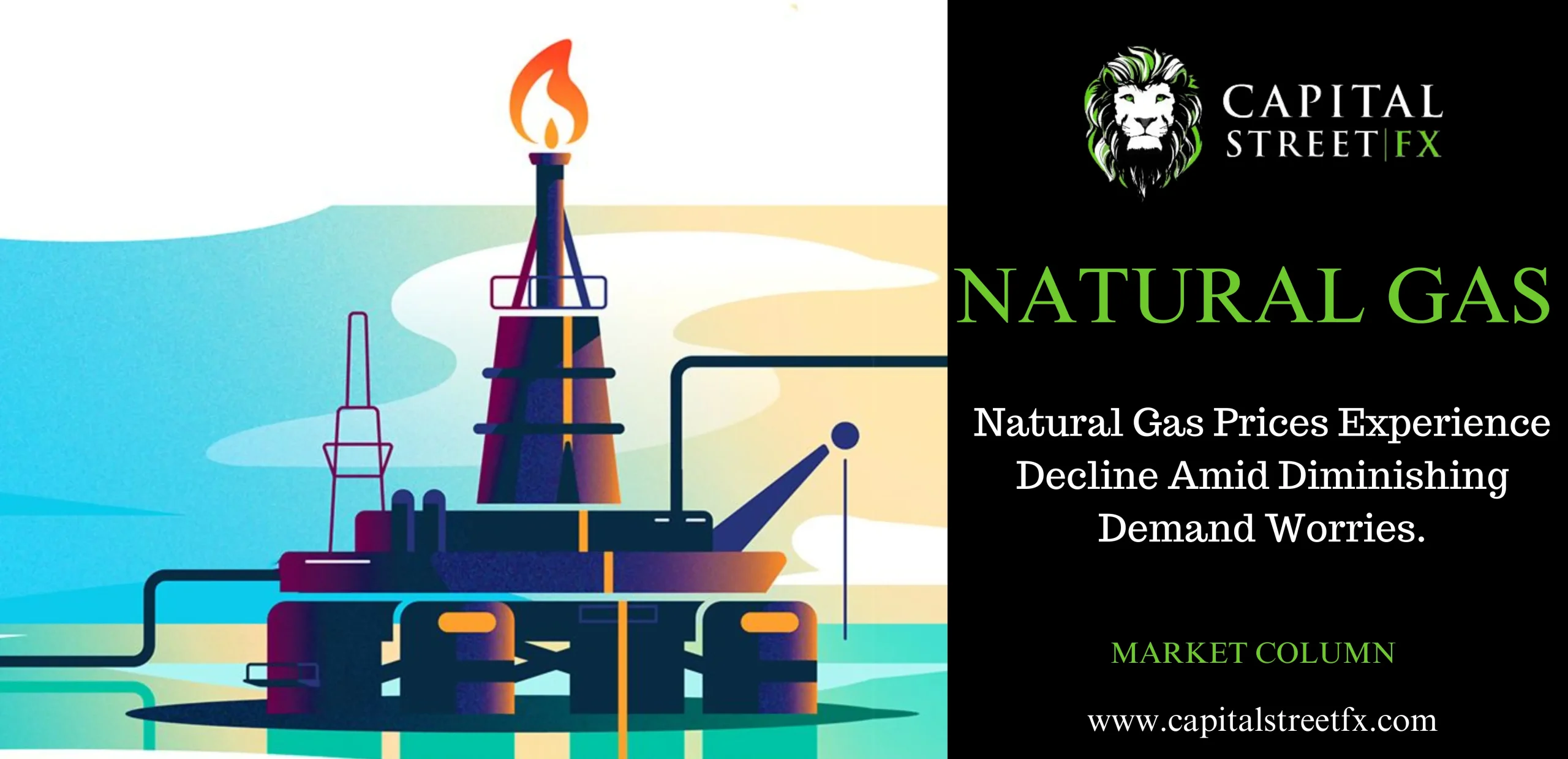Natural Gas Prices Experience Decline Amid Diminishing Demand Worries.
Introduction
In the current energy landscape, the price of natural gas is undergoing a downward trajectory, primarily due to concerns surrounding declining demand. This article delves into the factors influencing this trend, such as the influence of the US Federal Reserve, global gas demand, and international market dynamics.
Natural Gas Prices Respond to Declining Demand
A Shift in Momentum: Natural Gas Prices Decline Amid Demand Concerns
The prevailing sentiment around natural gas prices has taken a bearish turn as apprehensions about diminishing demand continue to ripple through the energy sector. Investors and analysts alike are closely monitoring this development and its implications for the industry.
FOMC Minutes Effect: US Dollar Strength Amplifies Price Drop
Following the release of the Federal Open Market Committee (FOMC) minutes, the US dollar has gained substantial ground. This movement has exacerbated the decline in natural gas prices, adding to the concerns of market participants.
Global Gas Demand and Its Impact
Global Gas Demand: A Determinant of Price Movements
The intricate relationship between global gas demand and price dynamics is unmistakable. As the US session commences and the Federal Reserve signals a more stringent monetary policy, the price of natural gas faces further downward pressure due to the perceived lackluster global gas demand.
Australian Pay Negotiations and Potential Resolution
The ongoing pay negotiations in Australia are poised to shape the trajectory of natural gas prices. A swift resolution to these discussions could potentially put an end to the existing strike, thereby alleviating some of the disruptions in gas supply.
Local Anticipation of Reduced Demand
The FOMC minutes shed light on the Federal Reserve’s dissatisfaction with the current inflation rate. This apprehension within the US central bank translates to an anticipation of reduced local demand, given the potential policy adjustments that could follow.
The Interplay of Factors on Natural Gas Prices
US Dollar Strength and its Ripple Effect
The strength of the US dollar casts a substantial shadow over natural gas prices. As the demand weakens, the influence of the US dollar’s fluctuations becomes increasingly pronounced, further contributing to the price decline.
Fed’s Interest Rate Decision and Price Outlook
The course of natural gas prices is also contingent on the Federal Reserve’s stance on interest rates. Should the central bank opt to maintain current levels or refrain from further rate hikes, it could set the stage for more extended periods of price decline.
Market Movers and Influencers
Weekly Gas Storage Changes: An Essential Market Indicator
At 14:30 GMT, market participants eagerly await the release of the weekly Gas Storage Changes report. The US Energy Information Administration will unveil modifications from the previous 29 billion cubic feet to a projected 34 billion cubic feet, a potential indicator of downward pressure on natural gas prices.
Regional Disparities in Gas Prices
The disparity in gas prices between the US and Europe serves as a critical market driver. Recent reports of Australian unions initiating a strike and halting gas deliveries to Europe have resulted in significant price disparities in the European market.
Europe’s Gas Storage Facilities: A Silver Lining
News of Europe’s nearly full gas storage facilities brings a glimmer of hope to the region. With up to 92% of the German stockpile occupied, the stage is set for more stability in gas prices, even amidst the backdrop of potential supply disruptions.
Meteorological Predictions and Price Implications
As meteorological predictions hint at the likelihood of a chilly winter in Europe, gas prices may find support even with nearly full storage facilities. This projection underscores the intricate relationship between natural gas prices and external factors.
LNG Supply Agreements: Industry Shaping Developments
ADNOC Gas and Japan Petroleum Exploration (JAPEX) have inked a significant 5-year LNG supply agreement with an estimated value ranging from $450 million to $550 million. This deal has the potential to reshape the industry’s landscape.
Tracking Tropical Storm Hilary
Tropical storm Hilary’s intensification into a hurricane as it approaches the Baja California peninsula stands as a focal point of interest. Its potential impact on gas supply and infrastructure is being closely monitored.
Technical Analysis of Natural Gas Prices
Market Volatility and Equilibrium Concerns
Recent trading days have showcased volatility in natural gas prices. A total drop of 8% since Tuesday’s opening price underscores the fragility of the equilibrium between supply and demand. Even minor fluctuations have the potential to trigger significant market movements.
FOMC Minutes’ Impact on Future Demand
The FOMC minutes have had a profound impact on market sentiment, casting doubt on future demand. The anticipation of high prices potentially curtailing or reducing natural gas usage further compounds this effect.
Key Price Levels and Projections
Analyzing the technical aspects, $3 remains a crucial level to monitor, adhering to the broader ascending trend channel since April. The recovery of natural gas prices hinges on a close above Tuesday’s high of $2.935, signifying a resurgence in demand. Key levels to watch for include an upward trend toward $3 and $3.065, the high of August 9.
Charting Support and Resistance
The 55-day Simple Moving Average (SMA) at $2.639 provides crucial support for natural gas prices. In the event of downward pressure intensifying, the bottom trend line of the trend channel, at $2.579, serves as a significant support level.

